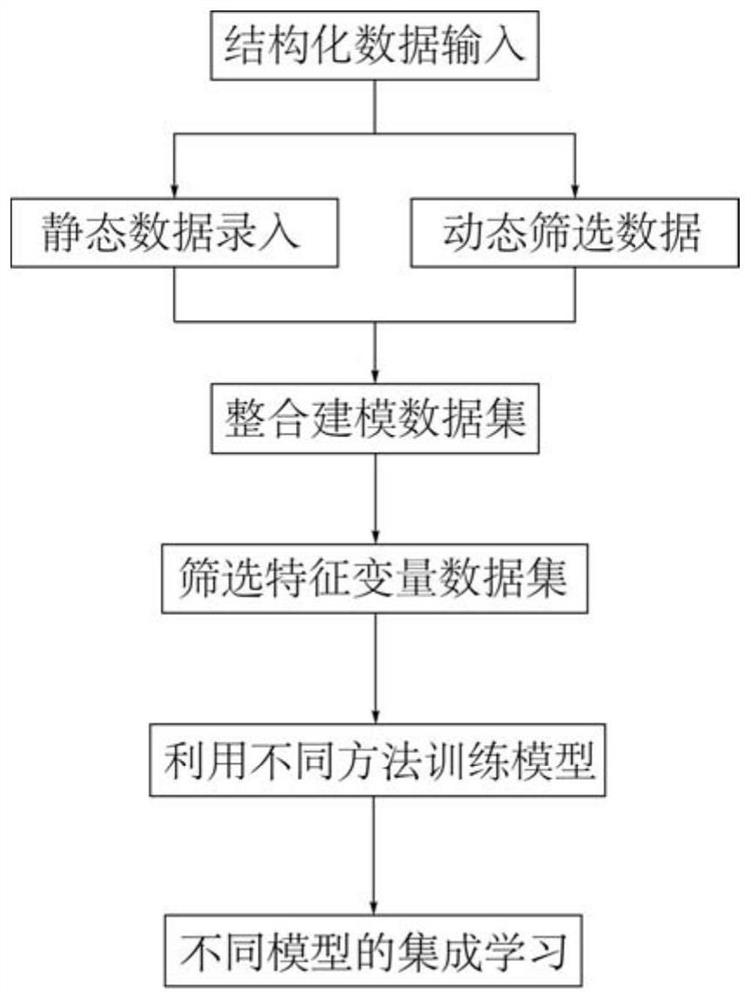Method for predicting delirium through artificial intelligence
A technology of artificial intelligence and methodology, applied in artificial life, instruments, health index calculations, etc., can solve problems such as missing models, outdated model variables, and inability to accurately reflect the pathological state of patients and medical interventions
- Summary
- Abstract
- Description
- Claims
- Application Information
AI Technical Summary
Problems solved by technology
Method used
Image
Examples
Embodiment Construction
[0014] The above and other technical features and advantages of the present invention will be described in more detail below in conjunction with the accompanying drawings.
[0015] Such as figure 1 As shown, the present invention is mainly for more accurate prediction of delirium in critically ill patients. The method extracts structured data from the historical data of the intensive care unit, respectively, and enters static data and dynamic data.
[0016] Static data entry includes patient demographic information, time of admission to ICU, type of ICU, patient’s ICU number, and chronic diseases associated with patients; dynamic data entry includes vital signs and laboratory test results before delirium assessment, and delirium assessment within 24 hours. medical interventions.
[0017] Based on the integrated dataset, the characteristic factors affecting patient prognosis were screened out by random forest method.
[0018] Then, different statistical methods and machine le...
PUM
 Login to View More
Login to View More Abstract
Description
Claims
Application Information
 Login to View More
Login to View More - R&D
- Intellectual Property
- Life Sciences
- Materials
- Tech Scout
- Unparalleled Data Quality
- Higher Quality Content
- 60% Fewer Hallucinations
Browse by: Latest US Patents, China's latest patents, Technical Efficacy Thesaurus, Application Domain, Technology Topic, Popular Technical Reports.
© 2025 PatSnap. All rights reserved.Legal|Privacy policy|Modern Slavery Act Transparency Statement|Sitemap|About US| Contact US: help@patsnap.com

